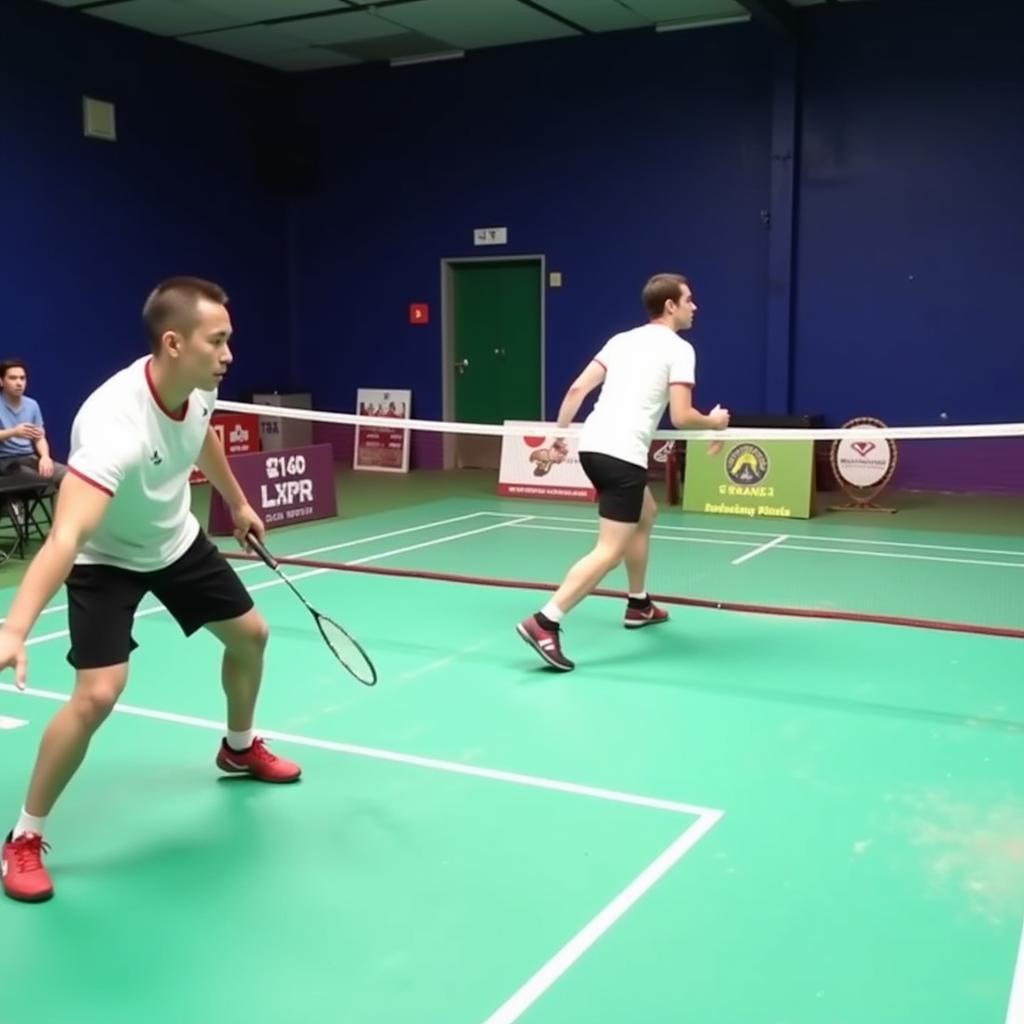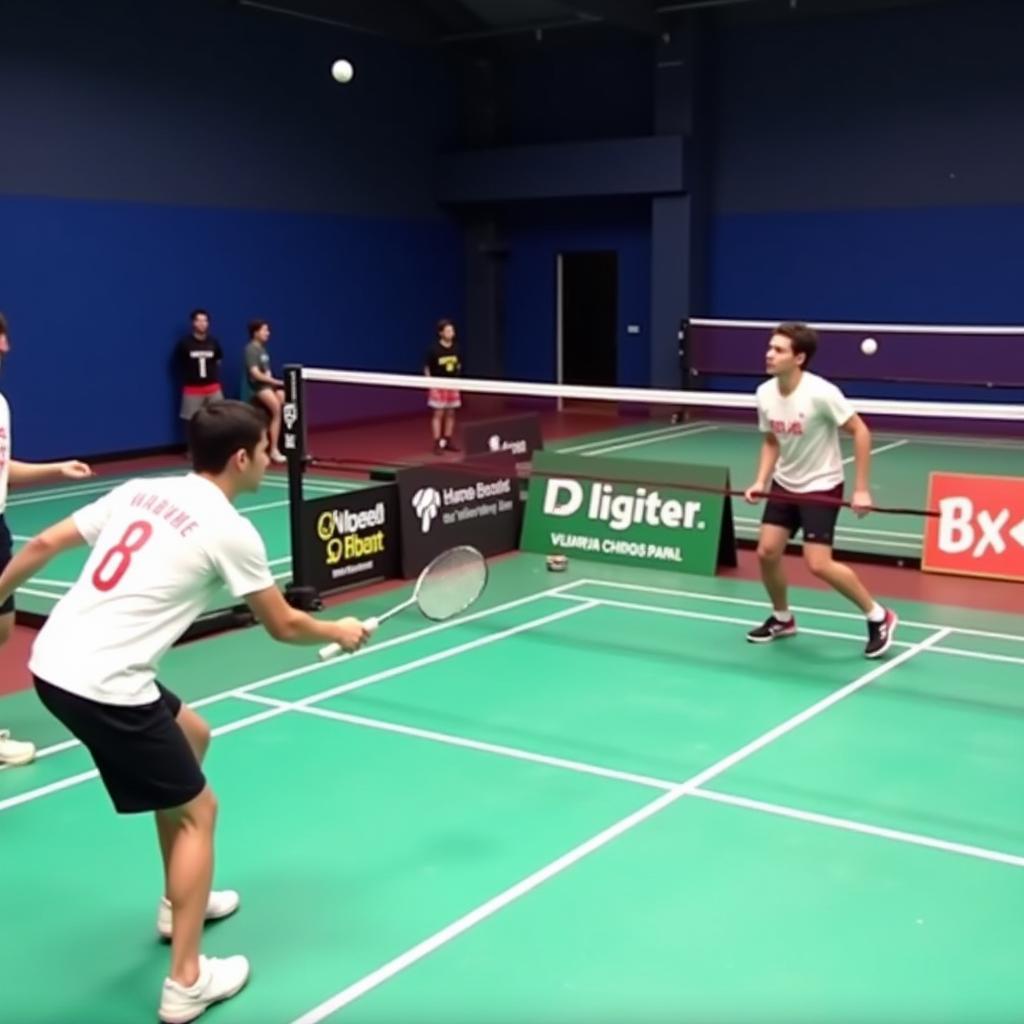Mastering the Defensive Double Formation in Badminton
October 31, 2024Defensive double formations are a cornerstone of successful badminton strategy. Whether you’re a seasoned pro or just starting out, understanding how to effectively implement these formations can significantly improve your game. This article will delve into the intricacies of defensive double formations, exploring their benefits, different variations, and practical tips to help you dominate the court.
Why Use a Defensive Double Formation?
Defensive doubles formations in badminton are designed to give you the best possible chance of retrieving powerful smashes and drives from your opponents. They prioritize covering a wide area of the court, allowing you to anticipate and react to attacks effectively. By adopting a strong defensive stance, you force the opposing team to work harder for their points, increasing the likelihood of them making errors. This strategic approach shifts the pressure back onto the attackers, creating opportunities for counter-attacks and ultimately winning the rally.
Types of Defensive Double Formations in Badminton
Several defensive double formations exist, each with its own strengths and weaknesses. Choosing the right one depends on your and your partner’s playing styles and the opponents’ strengths.
Side-by-Side Defensive Formation
This formation sees both players positioned parallel to the net, each responsible for covering their respective half of the court. This is particularly effective against wide smashes and allows for quick reactions to drops.
Front-and-Back Defensive Formation
In this formation, one player takes the front court near the service line while the other covers the rear court. This formation is excellent for defending against a combination of drops and smashes, allowing the front player to intercept drops and the back player to cover the deep shots.
Rotating Defensive Formation
This dynamic formation involves players constantly switching between front-and-back positions depending on the opponent’s shots. This requires excellent communication and anticipation but can be very effective in disrupting the opponent’s rhythm.
Key Techniques and Tips for Defensive Doubles
Effective communication is crucial in defensive doubles. Constantly communicate with your partner, calling out shots and indicating who will take the responsibility. This prevents confusion and ensures that the court is covered effectively.
Footwork is paramount. Quick and agile footwork allows you to reach shots faster and maintain a balanced defensive position. Practice shuffling sideways and backward to cover the court efficiently.
Anticipate your opponent’s shots. Watch their racket movements and body language to predict where they are likely to hit the shuttlecock. This anticipation will give you a head start in reacting and retrieving the shot.
 Front-and-Back Defensive Badminton Formation
Front-and-Back Defensive Badminton Formation
Practice specific drills to hone your defensive skills. Drills focusing on lifting the shuttlecock high and deep from the backcourt, as well as intercepting drop shots at the net, are particularly beneficial. Also, practice switching between different defensive formations smoothly.
Remember to remain patient and disciplined. Defensive doubles is about waiting for the opportune moment to counter-attack. Don’t rush your shots and focus on returning the shuttlecock safely.
Conclusion
Mastering defensive double formations in badminton is essential for improving your game and achieving success on the court. By understanding the various formations, practicing key techniques, and communicating effectively with your partner, you can transform your defense into a formidable weapon. So, embrace the defensive game, and watch as you turn defense into offense, ultimately dominating your opponents.
 Rotating Defensive Badminton Formation in Action
Rotating Defensive Badminton Formation in Action
FAQ
- What is the best defensive formation in badminton doubles? The best formation depends on your and your partner’s strengths and weaknesses, as well as your opponent’s playing style.
- How important is communication in defensive doubles? Communication is crucial for coordinating movements and avoiding collisions.
- How can I improve my footwork for defensive doubles? Practice shuffling sideways and backward to cover the court effectively.
- What are some good drills for defensive doubles? Lifting drills and drop shot interception drills are particularly beneficial.
- How can I anticipate my opponent’s shots? Watch their racket movements and body language for clues.
- What is the key to successful defensive doubles play? Patience, discipline, and effective communication are crucial.
- How can I turn defense into offense in badminton doubles? By forcing errors from your opponents through strong defensive play, you create opportunities for counter-attacks.
Need further assistance? Contact us at Phone Number: 0396443476, Email: [email protected] Or visit our address: 23 Tháng 3, Đắk Nia, Gia Nghĩa, Đắk Nông, Việt Nam. We have a 24/7 customer service team.